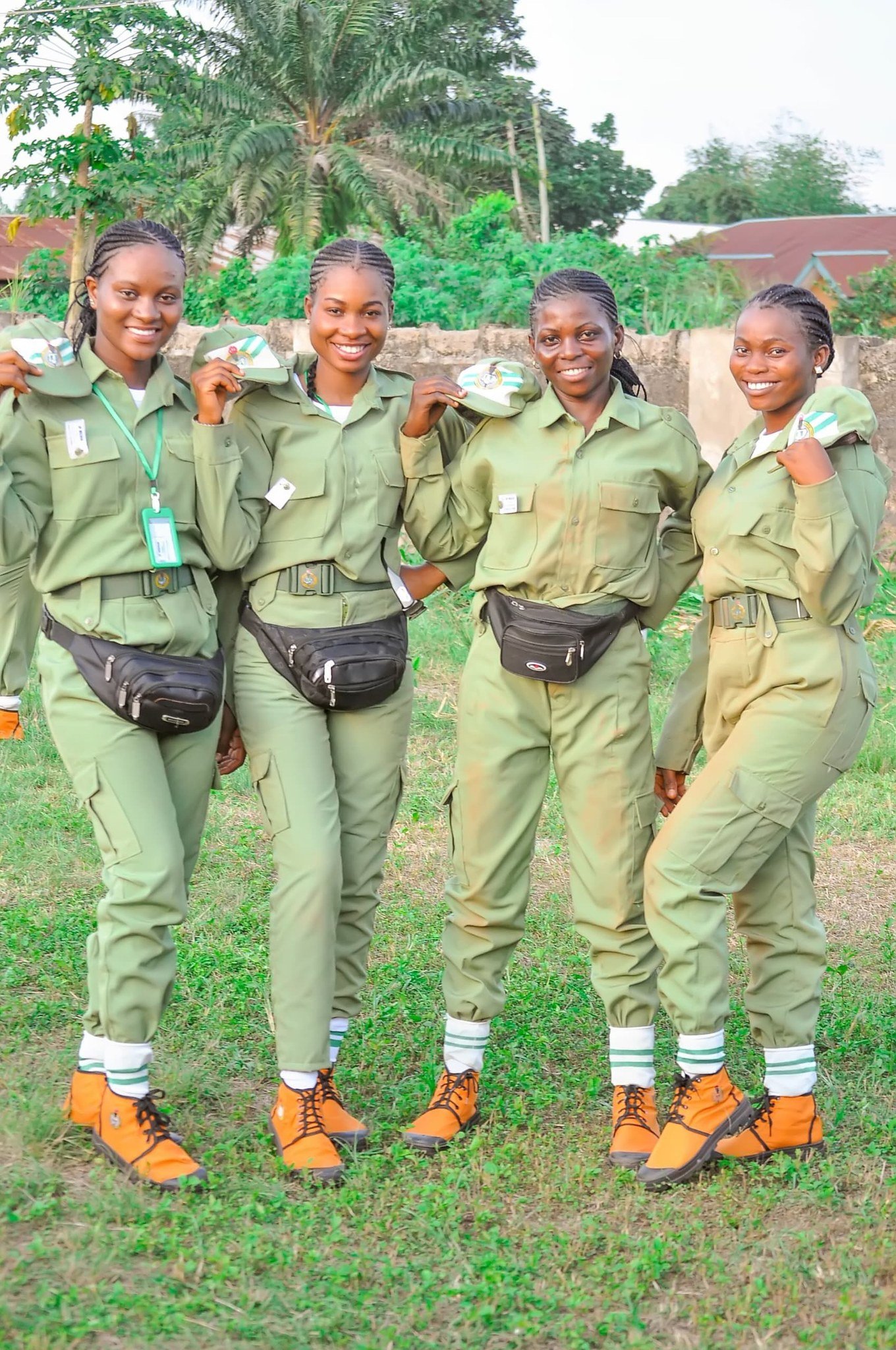Ever stared at that oversized NYSC khaki they hand out in camp and thought, “This could fit so much better”? You’re not alone. The National Youth Service Corps (NYSC) khaki uniform is more than just a symbol of national service—it’s your everyday armor during that one-year adventure. But let’s face it: the standard issue often feels like it was sewn for someone else entirely. Baggy trousers that drag on the ground, shirts that swallow you whole—sound familiar? The good news? You can sew your own NYSC khaki from scratch, tailored to your body for that sharp, confident look that turns heads during parades or CDS meetings.
Sewing your NYSC khaki isn’t just about saving a few bucks on camp tailors (who charge an arm and a leg for basic alterations). It’s about crafting something personal, ensuring a perfect fit, and maybe even adding subtle tweaks that stay within the rules. Whether you’re a guy going for the classic trouser-and-shirt combo or a lady opting for trousers over the skirt, this guide walks you through the entire process. We’ll cover the essentials: gathering materials, cutting patterns, and stitching it all together. By the end, you’ll have a uniform that’s comfy, durable, and ready for whatever service throws your way. Let’s dive in—no prior pro sewing experience required, just patience and a steady hand.
What You’ll Need On How To Sew NYSC Khaki: Materials and Tools for the Job
Before you thread that needle, stock up on the basics. Quality matters here because your khaki has to withstand drills, travel, and the occasional downpour.
Materials:
- Khaki fabric: Go for sturdy cotton or a cotton-poly blend in the official NYSC khaki shade (a warm beige-tan). You’ll need about 3-4 yards (2.7-3.6 meters) for the full set—2 yards for the trousers and 1.5-2 yards for the shirt. Pick something wrinkle-resistant if you hate ironing.
- Matching thread: Strong polyester thread in khaki color.
- Buttons: 6-8 medium-sized buttons for the shirt (plus extras for pockets or epaulettes).
- Zipper: One 7-8 inch zipper for the trouser fly.
- Interfacing: Fusible medium-weight for collars, cuffs, and pocket flaps to add structure.
- Elastic or drawstring (optional): For trouser waist if you want extra comfort.
- Bias tape or binding: For finishing raw edges neatly.
Tools:
- Sewing machine: A basic one works, but if you have access to an overlocker (serger), it’ll make edges pro-level clean.
- Measuring tape, tailor’s chalk, pins, and scissors (fabric shears are best).
- Iron and ironing board: Pressing is half the battle for crisp lines.
- Pattern paper or old newspaper: For drafting your custom pattern.
- Ruler or French curve: For smooth curves in cutting.
Pro tip: Wash and iron your fabric before cutting to avoid shrinkage surprises later.
Step-by-Step: Sewing the NYSC Khaki Shirt
The NYSC shirt is a button-down with a collar, breast pockets, and shoulder epaulettes for those all-important badges. It’s safari-inspired—practical with a touch of military flair. Aim for short or long sleeves depending on your preference (check camp rules for sleeve length).
1. Take Your Measurements
Start with accuracy. Measure your chest, waist, shoulders, arm length, and neck. Add 2-4 inches for ease (loose fit is key for movement). For example:
- Chest: Measure around the fullest part.
- Shoulder: From seam to seam across the back.
- Length: From shoulder to desired hem (usually hip-level for NYSC).
Draft a basic pattern: Front and back panels, sleeves, collar, and pockets. Use an old shirt as a template if you’re new to this.
2. Cut the Fabric
Lay your fabric flat, wrong side up. Pin your pattern pieces:
- Two front panels (with placket allowance: 4 inches on one side for buttonholes, 2.5 inches on the other for buttons).
- One back panel (cut on fold for symmetry).
- Two sleeves.
- Collar: Two pieces (one outer, one under) plus interfacing.
- Pockets: Two rectangular pieces (about 6×7 inches) with flaps.
- Epaulettes: Two strips (4×2 inches) for shoulders.
Cut with 1/2-inch seam allowances all around. Don’t forget darts on the front for a subtle shape—mark them below the chest.
3. Sew the Darts and Placket
- Stitch the front darts: Fold along the marked line, sew from wide end to point. Press flat.
- Placket time: Fuse interfacing to the placket allowances. For the buttonhole side, fold 1 inch in, then 0.5 inch, and stitch down. For the button side, fold 1 inch to the right side, then the rest to the wrong, and topstitch.
- Add decorative stitches if you want that polished look.
4. Attach Pockets and Epaulettes
- Pockets: Hem the top edge, add a box pleat in the center for depth. Position 8-8.5 inches down from the shoulder, align with dart center. Stitch around, leaving top open. Add flaps above: Sew right sides together, turn out, topstitch onto shirt.
- Epaulettes: Fold strips, stitch to shoulders, leaving ends open for badges.
5. Assemble the Body
- Join shoulders: Right sides together, sew front to back at shoulders.
- Attach yoke (if using): Sew to back panel, topstitch for reinforcement.
- Sleeves: Set in sleeves by pinning to armholes, easing fabric for a smooth fit. Sew.
6. Collar and Finishing
- Collar: Fuse interfacing to one piece. Sew outer and under together, clip corners, turn right side out. Attach to neckline, sandwiching between layers.
- Side seams: Sew from hem to sleeve end.
- Hem: Fold up 1 inch, stitch.
- Buttons: Mark and sew buttons; make buttonholes opposite.
Press everything—your shirt should now scream “service-ready” with a custom edge.
Step-by-Step: Sewing the NYSC Khaki Trousers
NYSC trousers are combat-style cargo pants: Straight legs, multiple pockets, zipper fly, and belt loops. They’re built for durability, so reinforce stress points.
1. Measurements and Pattern
Key measurements: Waist, hips, inseam (crotch to ankle, usually 30-34 inches), outseam (waist to ankle, around 40 inches), thigh circumference.
- Draft: Front and back pieces (two each), pockets (side and back), fly pieces, waistband.
- Add 1-2 inches ease for comfort.
2. Cut the Pieces
Fold fabric, cut:
- Two front legs.
- Two back legs.
- Waistband: 4 inches wide, length = waist + 4 inches.
- Fly: One piece 2.5×9 inches.
- Pockets: Side (10×10 inches), back (similar), cargo flaps.
- Belt loops: Five strips (6×1.5 inches).
Include 1/2-inch seams, 2-inch hem allowance.
3. Pockets First
- Side pockets: Mark 2.5 inches from top on front. Attach pocket bag, stitch curve, trim to 0.5 inch, topstitch.
- Back/cargo pockets: Pleat center, position on back legs, stitch sides and bottom. Add flaps: Sew, turn, topstitch above pocket.
4. Assemble Legs
- Front: Sew darts if needed, attach fly: Mark 7 inches for zip. Stitch fly pieces, insert zipper, topstitch.
- Join fronts: Sew center seam below fly.
- Backs: Join center seam.
- Legs: Sew inseams (inside legs), then outseams (sides).
5. Crotch and Waist
- Join front to back at crotch: Align, sew curve.
- Waistband: Fuse interfacing, attach to top, fold over, stitch. Insert elastic if desired.
- Belt loops: Fold strips, stitch to waistband at even intervals (front, sides, back).
6. Hem and Finish
- Hem: Fold 2 inches, stitch.
- Reinforce: Topstitch pockets, fly, and seams for strength.
Test the fit—adjust as needed before final stitches.
Pro Tips and Pitfalls to Dodge
- Fit checks: Baste pieces together first for a trial run. It’s easier to rip out temporary stitches than permanent ones.
- Fabric handling: Khaki can fray, so zig-zag raw edges or use bias binding.
- Common mistakes: Skipping pressing (leads to wonky seams), wrong zipper insertion (practice on scrap), or uneven pockets (measure twice!).
- Customization: Add subtle reinforcements like bar tacks on pockets, but keep it NYSC-compliant—no wild alterations.
- Time saver: If you’re short on time, focus on trousers—they’re the trickiest and most visible.
Sewing takes practice, so if your first attempt isn’t perfect, remember: even camp tailors started somewhere.
Wrapping It Up: How To Sew NYSC Khaki
There you have it—a full blueprint for sewing your NYSC khaki that fits like a dream and stands up to the rigors of service. From measuring up to that satisfying final press, you’ve got the skills to turn basic fabric into a uniform that’s uniquely yours. Not only will you save on those exorbitant camp alterations, but you’ll stride into orientation with the quiet pride of a DIY master. Grab your tools, fire up that machine, and get stitching. Who knows? This could spark a lifelong love for tailoring. Serve well, stay safe, and rock that khaki with style!






